My mum used this £12 childhood toy to grow clematis, and the results were impressive – and fast!
It's my new favourite way to grow climbers

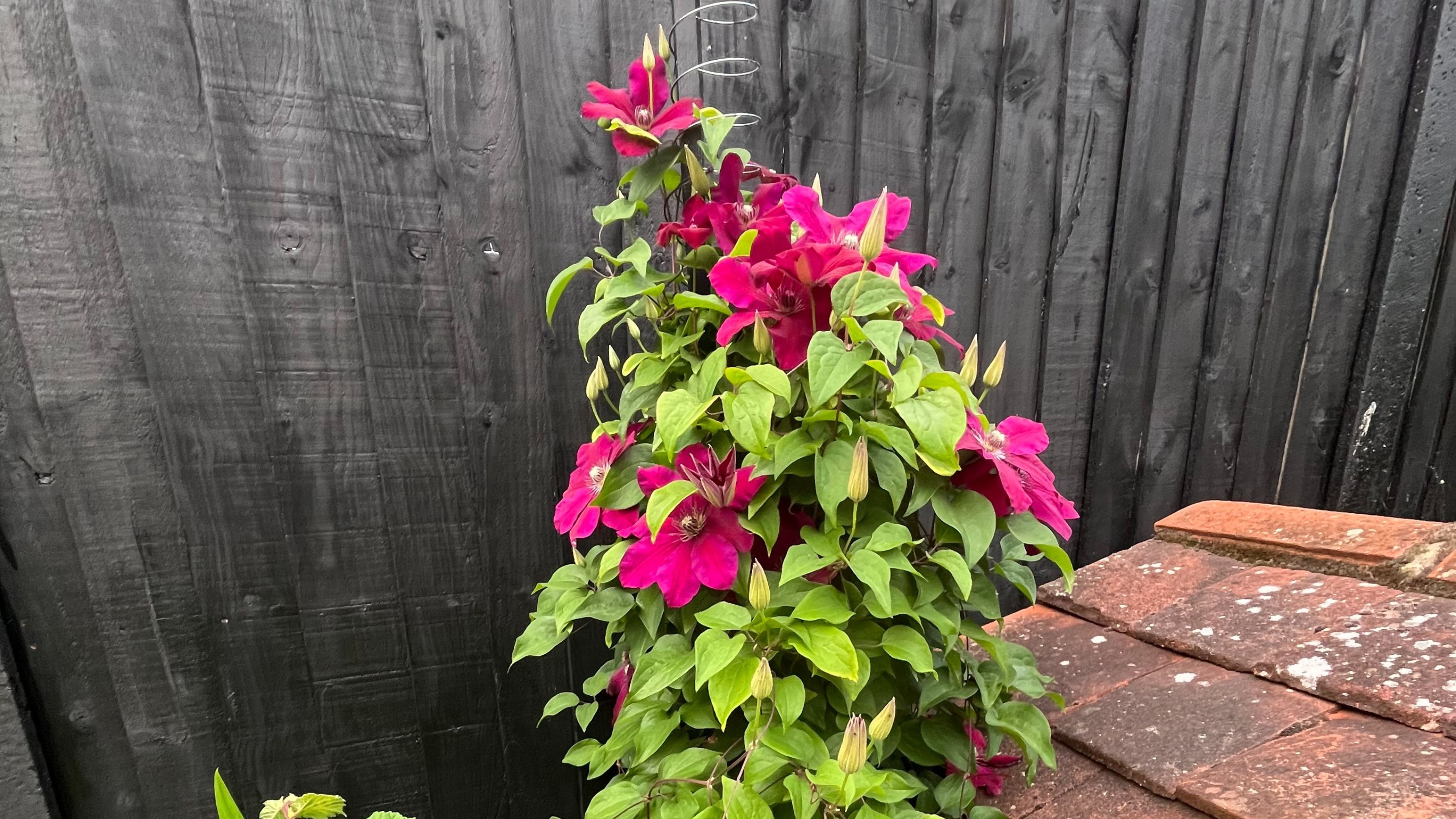
Here’s one toy I didn’t expect to see used as a plant support: a Slinky.
My mum is always coming up with brilliant DIY and upcycling ideas for the garden, but this one might be my favourite so far. She used a £12 Super-Size Metal Spring Toy from Amazon to grow a vertical column of clematis, and the results were fast and impressive.
Here’s how she did it.
What you'll need
- A super-size Slinky like the WOW! STUFF Super-Size Metal Spring Toy from Amazon
- A clematis plant like Clematis 'Zara' from Crocus
- A wooden post like this Incised Timber Fence Post from Wickes
- A screw eye – you can pick up a pack of 25 screw eyes from Amazon
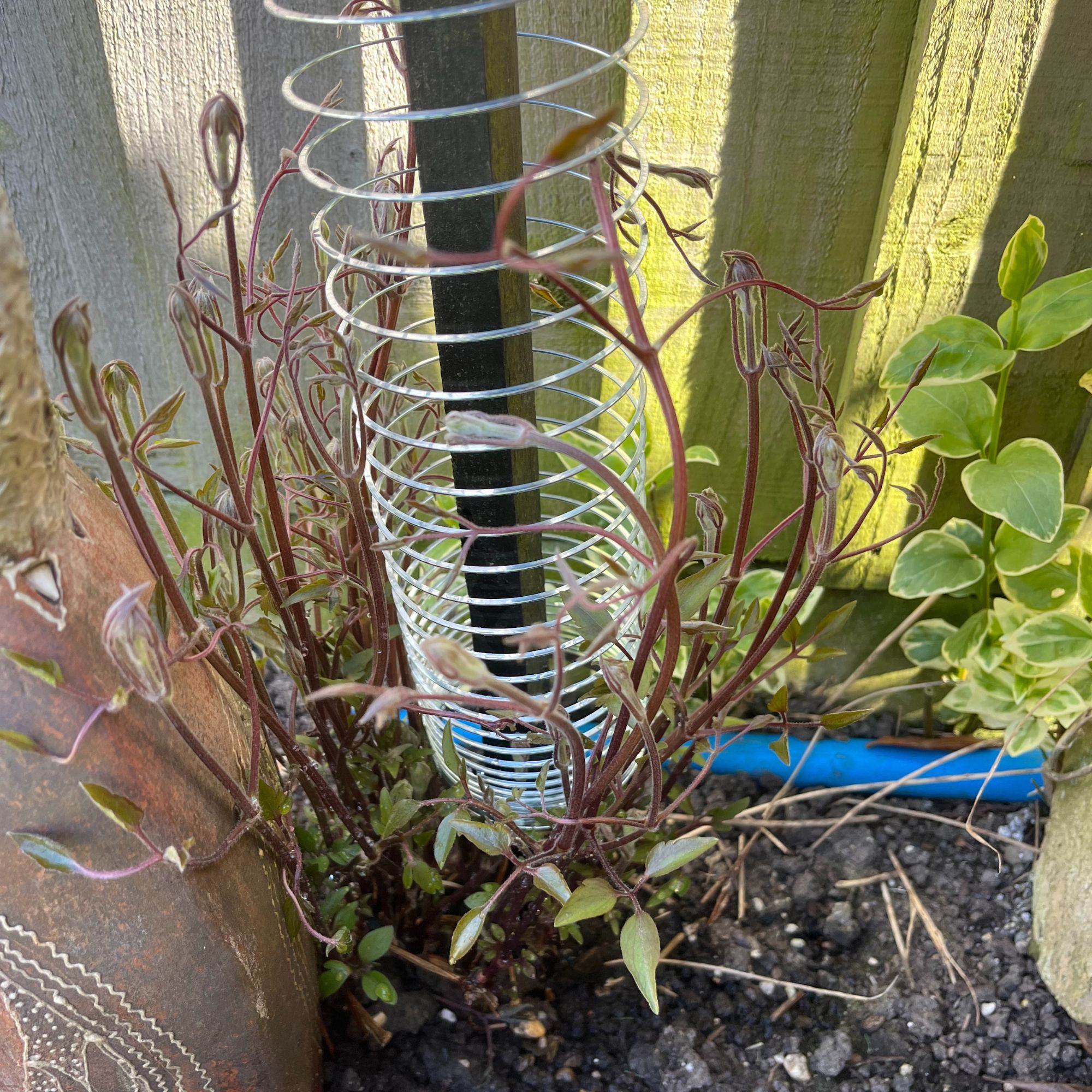
When my mum told me she was using a Slinky to grow clematis, I couldn’t wait to see the results. Luckily, I didn’t have to wait long – my mum put the Slinky up at the end of March, and within weeks, the shoots began wrapping themselves around the base springs.
Before we knew it, the clematis burst into leaf, and the foliage began a steady (but fast) climb up the Slinky.
Since the springs are circular, the plant formed a lush, 3D effect, and the Slinky was completely disguised by the leaves. I’m a big fan of a budget trellis idea, but this one might be the best I’ve seen so far.
So, how did she do it?
Sign up to our newsletter for style inspiration, real homes, project and garden advice and shopping know-how
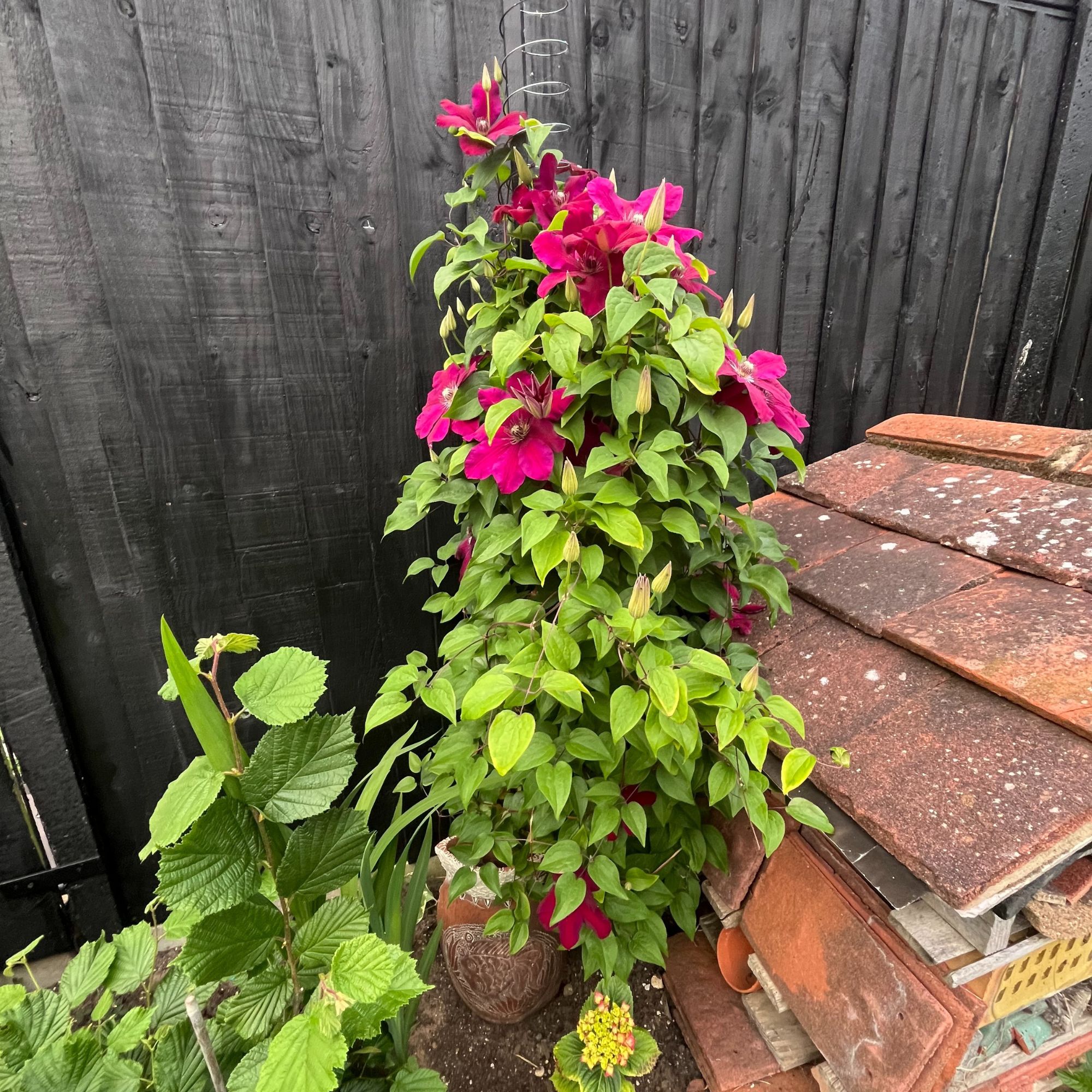
We had an old wooden one-inch batten lying around, so that worked as a support for the Slinky itself.
My mum simply looped the post through the middle of the Slinky, stretched the springs out across the length of the post, and pushed and bent the end of the slinky through a screw eye at the top of the post (she used her fingers, but you could also use a pair of pliers like the Hilka Mini Combination Pliers, which are currently £4.52 at Amazon). She knocked the base of the post into the ground with a rubber mallet so it stood against the fence.
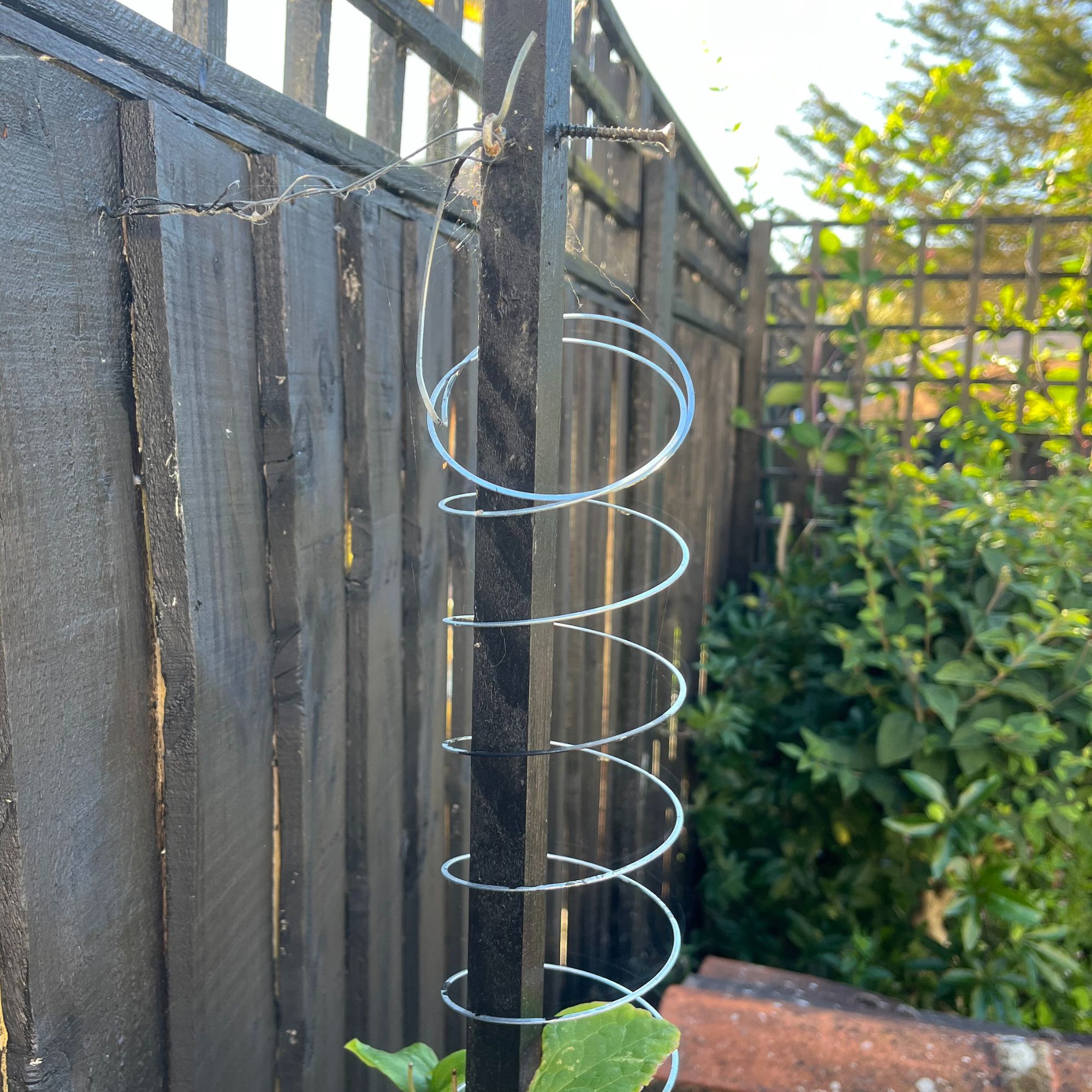
My mum pruned her clematis last year, so she positioned the support just behind the ground-level shoots. By the time the flowers appeared, the clematis had formed a 3D column of green leaves and showy pink blooms, and it looked absolutely incredible next to my mum's bug hotel.
The only thing my mum wishes she'd done differently is make the batten shorter, because the clematis has already reached its peak height and part of the Slinky is still visible above the plant. But that's easily remedied, and it's worth considering the reach of the variety you're growing if you're trying this idea for the first time.
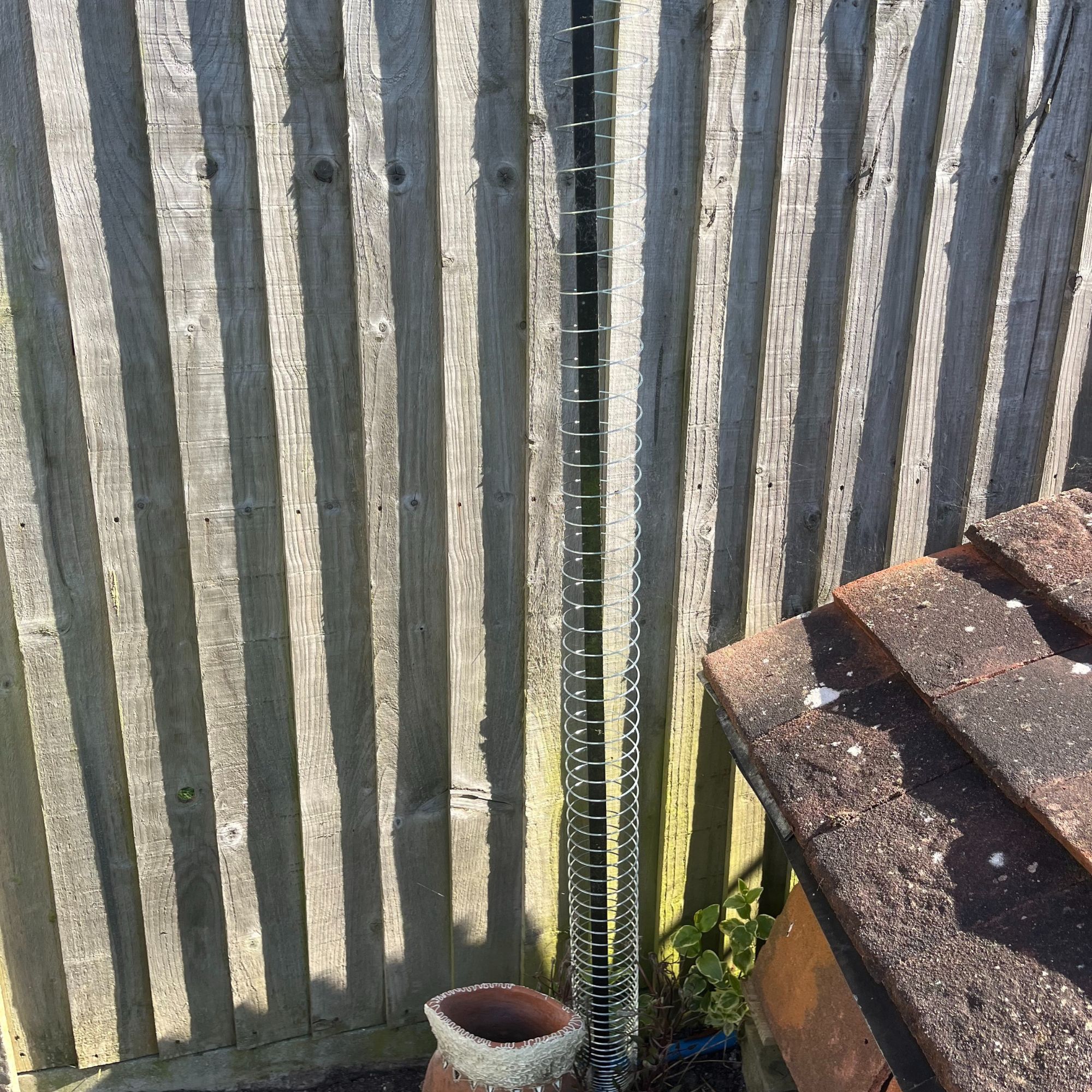
I asked Gardening Express's founder, Chris Bonnett, for a clematis variety recommendation.
'Clematis 'Piilu''s first flowers grow on old stems from last year, and the second round comes from new growth,' he says. 'This variety is best for those who are happy to take the time to prune the flower carefully.'
For the best results, you'll need to choose the right growing spot for your clematis Slinky.
'Clematis loves to have its top in the sun but its roots in shade, so place your Slinky in a suitable place and plant at the base of the Slinky in a spot with around six hours of sunlight a day,' says Morris Hankinson, founder of Hopes Grove Nurseries.
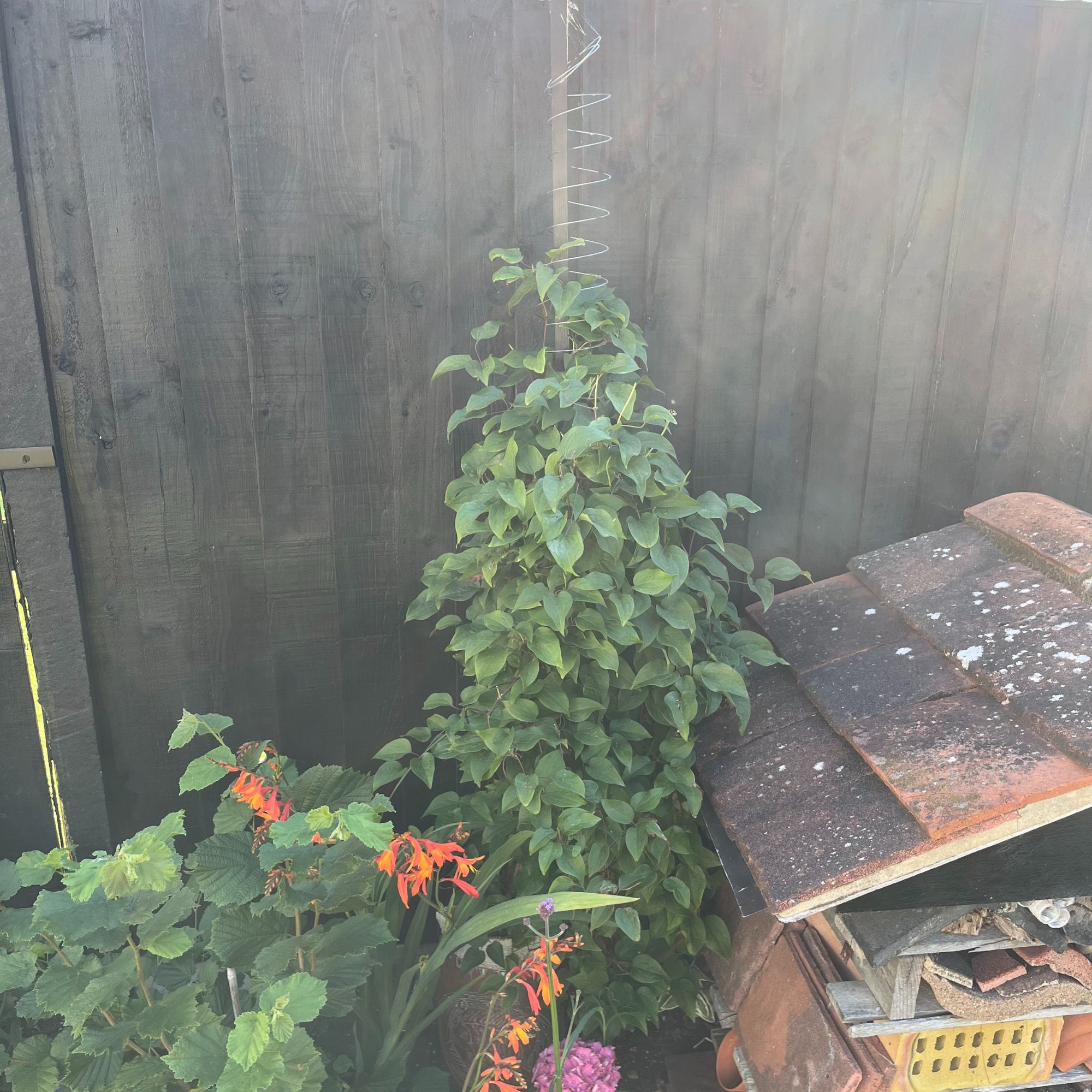
My mum's fence is south-facing, which puts it in good stead for plenty of flowers.
The clematis finished its first round of flowering a few weeks ago, but it's ready to put out a second round of blooms later in the summer. In the meantime, the foliage is thriving and makes a lovely feature in itself until the flowers reappear.
It’s safe to say that the Slinky gets my vote for the best plant support for clematis. If you’ve got a metal one lying around at home, it’s worth giving it a go. My mum’s hoping hers will weather to create a rusted corten steel effect.

Sophie joined the Ideal Home team as Gardens Editor in June 2024. After studying English at Royal Holloway, University of London, she began writing for Grow Your Own, which spurred on her love of gardening. She's tried growing almost every vegetable under the sun, and has a soft spot for roses and dinnerplate dahlias.
As Gardens Editor, Sophie's always on the lookout for the latest garden trend. She loves sharing growing hacks for every space, from herbaceous borders to balconies.